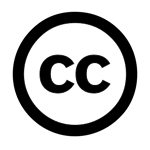Carly Finseth is a PhD student in Technical Communication & Rhetoric at Texas Tech University. She has taught first-year composition at both Clemson University and at Texas Tech University, and is currently investigating how to teach an introductory technical communication course as a game. In 2011 she won Clemson University's Thomas E. Douglass Teaching Award for Excellence in Teaching. Her research interests include teaching writing, online education, gaming studies, knowledge creation through play, usability, and open source technologies and culture.
Inventing Through "Desire" and "Skill"
Membership into an open source project typically takes two things: desire and skill. Beyond that, it’s merely an effort to prove to the existing community that you have both traits and are willing to contribute to the overall effort. Perhaps because of the inherent nature of open source projects, which are founded upon ideals of freedom, contributors aren’t given tasks to perform but are instead given a list of possible problems to solve. Those wishing to join the community are then able to pick and choose which portion of the project they feel they’re best suited. Trust is established and maintained by a system of natural order; contributors self-select the portion of the project they have the most desire and skill to accomplish and continued membership in the community hinges upon the success of the results. Thus, if you can successfully solve a problem that benefits the greater good, you are not only trusted but are welcomed into the open source community with "open" arms.
It then follows that if the open source community, typically made up of individual strangers from around the world, can invent together based on shared traits of desire and skill, we should be able to harness that power into the Open Source Composition Space as well. Creating open invention in the writing classroom, then, is simply a matter of redefining student roles to encourage the implementation of a trusting community built upon self-selected strengths.
In the first-year composition program at Clemson University, learning is based on four foundational principles: rhetoric and argumentation, information design and technology, research, and collaboration. As an instructor in this program from 2010-2011, I used these four course strands to guide not only student learning but also the creation of open invention. At the beginning of the term, I asked students which of these four learning objectives they feel that they are best at – and then required them to write a short summary that explained their answers. Along with this survey, I had them answer a series of additional multiple choice questions, which ultimately got to the same objective of student assessment but through a slightly different way. For instance, I provided a list of technologies and asked them to circle which ones they have experience with. Answers included: blogs, podcasts, audio/video editing, digital photography, wikis, website design, and so on. This provided helpful information because, for example, some students might have said that they weren’t good at information design and technology, but then would circle 10 different technologies that they used on a regular basis. In other words, it helped break down some of the self-doubt that some students bring with them into their first college composition course by allowing them to see that they had value. These students, many of whom arrived at college questioning their abilities to succeed in an English course, began to see that they could contribute - and create - valuable knowledge within a composition course that might go beyond traditional paper-based writing.
One of the most spectacular things I have learned from this exercise is the fact that rarely have these students been given the confidence to imagine that they may have expertise in something; discovering that they do have knowledge that could help others – that "skill" that is so desired in open source culture – is incredibly empowering. In that same class survey I also typically asked at least one open-ended question relating to their hopes for what we might cover in class; this gave me an idea of the skills they entered the class with and also provided me with that all-too-important second aspect of successful open source invention: "desire." I’ve repeated this survey exercise with a vastly different first-year writing curriculum at Texas Tech University. In both cases, I’ve found that the majority of my students come into first-year writing courses with a desire to learn something; poor attitudes stem from the belief that they have no control over what that "something" might be. By asking the students what they want to learn, not only does it give me, as an instructor, the tools to understand their self-assessed strengths, but it provides me with a blueprint for fueling each class’ unique combination of skill and desire into a course that magically shifts from a required course that they “have to take" into a class that they actually look forward to attending.
<< Previous: Open Invention
